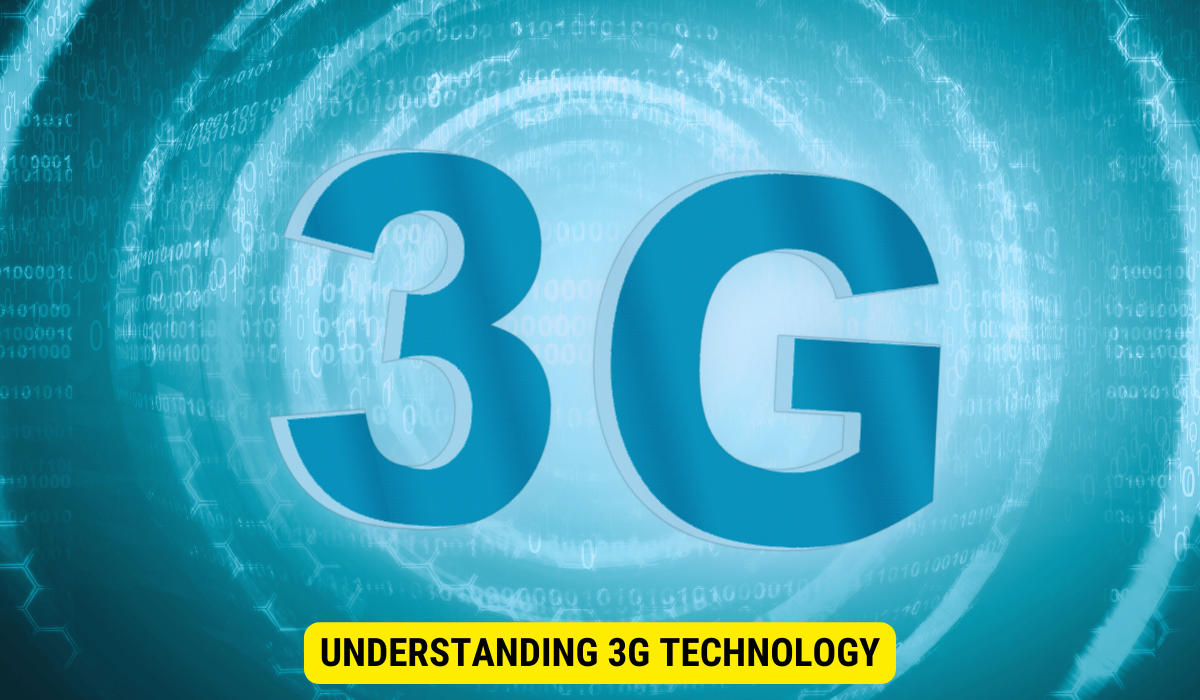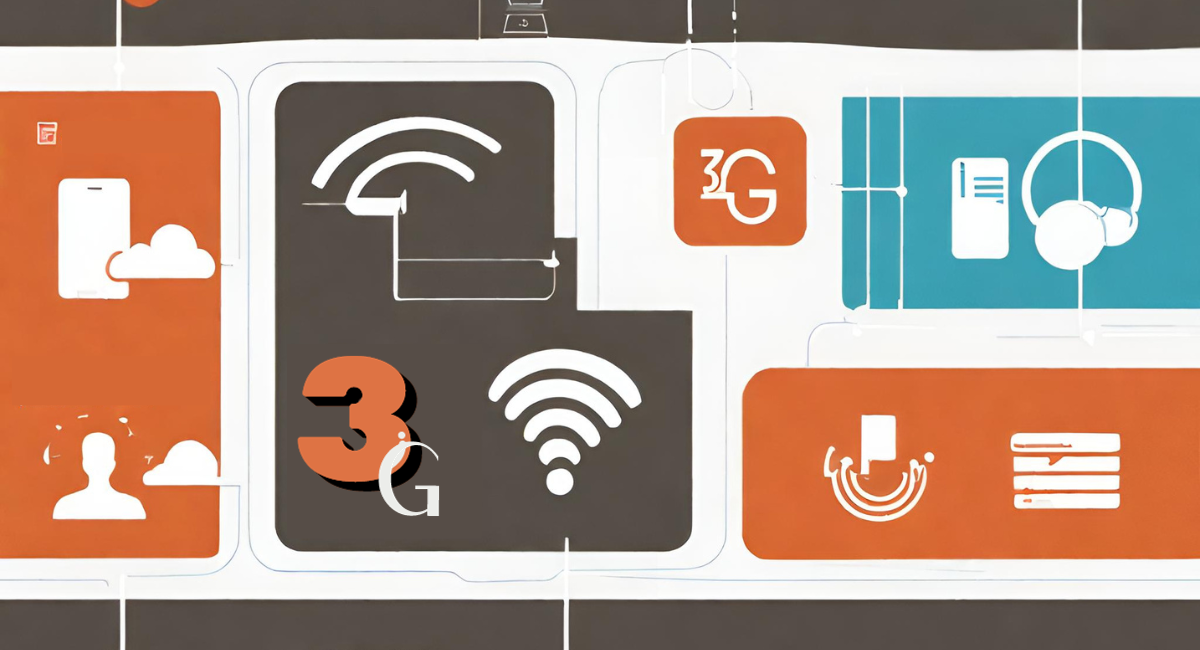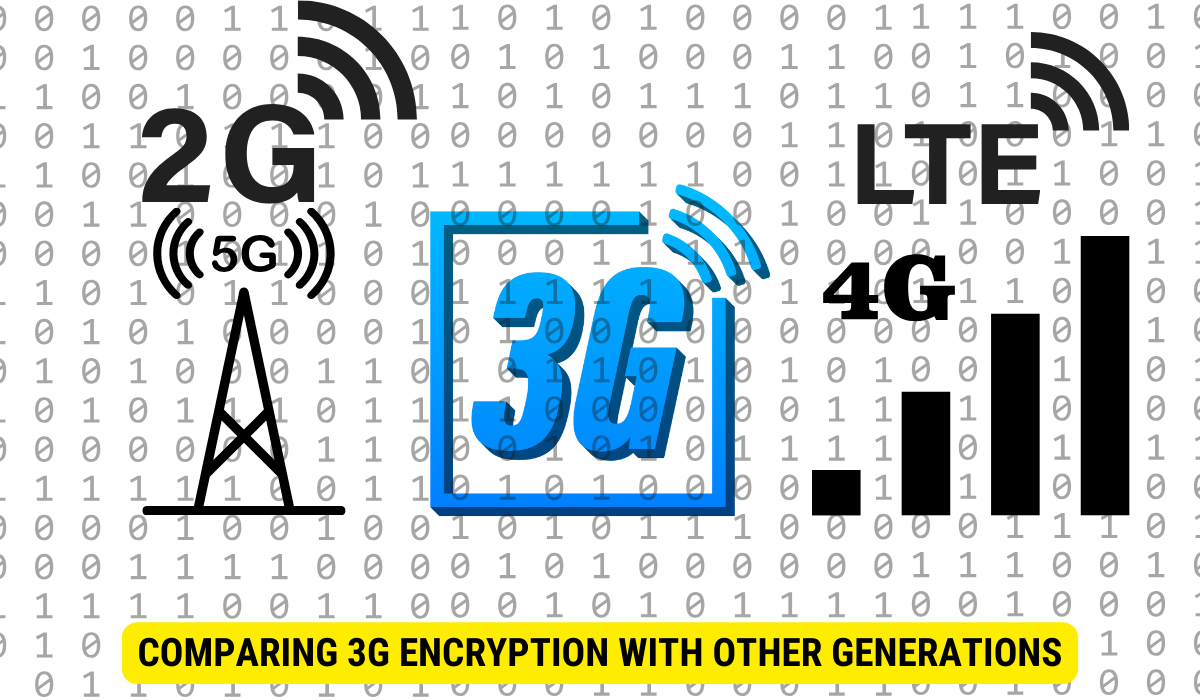Yes, Data sent over a 3G network is generally encrypted, but the level of encryption and security can vary depending on your specific application or service.
The use of 3G technology has become ubiquitous in our daily lives. Whether browsing the Internet on smartphones or streaming videos on tablets, we rely on 3G networks to stay connected. But have you ever wondered if the data sent over 3G is encrypted? I will dive into the world of 3G technology and explore how data encryption plays a vital role in confirming the security of our information.
Understanding 3G Technology

The Basics of 3G:
Before we delve into the encryption aspect, let’s first understand the fundamentals of 3G technology. 3G stands for the third generation and mentions the third iteration of wireless mobile telecommunications technology. It revolutionized communication by enabling faster internet speeds and better data transmission capabilities.
Evolution of 3G Technology:

Since its inception, 3G technology has come a long way regarding performance and features. It has witnessed several advancements, such as higher bandwidth, improved signal quality, and enhanced data transfer rates. These advancements have paved the way for a more refined and seamless user experience.
One of the significant milestones in the evolution of 3G technology was the introduction of High-Speed Packet Access (HSPA). HSPA significantly improved data transfer rates, allowing users to enjoy faster download and upload speeds. This technology enabled users to stream high-quality videos, download large files, and browse the Internet seamlessly.
Another noteworthy advancement in 3G technology was the introduction of Enhanced Data Rates for GSM Evolution (EDGE). EDGE technology provided a bridge between 2G and 3G networks, offering faster data transfer rates than traditional 2G networks. It allowed users to access the Internet, send emails, and use various data-intensive applications more efficiently.
As the demand for faster and more reliable connectivity grew, 3G technology evolved. The introduction of High-Speed Uplink Packet Access (HSUPA) further enhanced the data transmission capabilities of 3G networks. HSUPA focused on improving the upload speeds, enabling users to easily share large files, upload videos, and participate in real-time video conferencing.
Moreover, 3G technology also witnessed the introduction of High-Speed Downlink Packet Access (HSDPA). HSDPA aimed to improve the download speeds, allowing users to download files, stream media, and browse the Internet much faster. This advancement in 3G technology opened up new possibilities for multimedia-rich applications and services.
Furthermore, 3G technology brought significant improvements in signal quality and coverage. With more advanced base stations and antennas, 3G networks offered better reception and reduced call drops. This improvement in signal quality ensured that users could enjoy uninterrupted voice calls and reliable data connectivity, even in areas with weak network coverage.
In conclusion, the evolution of 3G technology has been remarkable, with advancements in bandwidth, signal quality, and data transfer rates. These improvements have transformed how we communicate and access information, providing faster and more reliable connectivity. We can expect further enhancements as technology advances, making our mobile communication experience even more seamless and efficient.
The Concept of Data Encryption
What is Data Encryption?
Data encryption converts plain text into coded form, ciphertext, to protect sensitive info from unauthorized access. It ensures that even if an external entity intercepts the data, it remains unreadable and unusable without the proper decryption key.
Data encryption involves using complex algorithms and mathematical computations to transform data into an encrypted form. This process makes it extremely difficult for unauthorized individuals to decipher the information, providing an additional layer of security.
Importance of Data Encryption:
Data encryption plays a crucial role in safeguarding personal and financial information. It confirms the confidentiality and integrity of data transmitted over networks, protecting it from eavesdropping and tampering. Valuable data can be easily intercepted without encryption, leading to potential security breaches.
In today’s digital age, where cyber threats are becoming increasingly sophisticated, data encryption is more important than ever. Businesses, governments, and individuals must implement robust encryption procedures to protect sensitive info from unauthorized access.
One of the key benefits of data encryption is that it provides a secure method for transmitting data over insecure networks, such as the Internet. When data is encrypted before transmission, it becomes virtually impossible for hackers to intercept and decipher the info. This is particularly important for online transactions, where sensitive financial info, such as credit card details, is transmitted.
Data encryption also helps organizations comply with various regulatory requirements and industry standards. Several sectors, such as healthcare and finance, have strict data protection rules to ensure the privacy and security of sensitive information. By implementing encryption technologies, administrators can demonstrate their commitment to data security and compliance.
Furthermore, data encryption can also protect against insider threats. While organizations often focus on external threats, such as hackers and cybercriminals, it is important to recognize that internal employees can pose risks. Encrypting data can prevent unauthorized access and ensure only authorized individuals with the decryption key can view and use the information.
In conclusion, data encryption is a critical factor of modern-day cybersecurity. It provides a robust and effective method for protecting sensitive information from unauthorized access. By implementing encryption technologies, organizations can safeguard their data, maintain customer trust, and comply with regulatory requirements.
How 3G Networks Handle Data?
Data Transmission in 3G:
Regarding data transmission, 3G networks utilize various technologies to ensure efficient delivery. These technologies include Code Division Multiple Access (CDMA), Time Division Multiple Access (TDMA), and Frequency Division Multiple Access (FDMA). These methods allow for simultaneous transmission and reception of data packets, enabling seamless communication between devices.
CDMA, one of the key technologies used in 3G networks, allows multiple users to share the same frequency band simultaneously. This is realized by assigning a unique code to each user, which helps differentiate their signals. TDMA, on the other hand, divides the frequency band into time slots, allowing multiple users to take turns transmitting and receiving data. Lastly, FDMA divides the frequency band into smaller sub-bands, each assigned to a different user, enabling parallel transmission and reception.
Security Measures in 3G Networks:
3G networks incorporate various security measures to protect data during transmission. These measures include user authentication, network access control, and data encryption. Each component works with the others to create a comprehensive security framework.
User authentication is a crucial aspect of 3G network security. It confirms that only authorized users can access the network and transmit data. This is typically done through passwords, PINs, or biometric identification methods such as fingerprint or facial recognition.
Network access control further enhances security by monitoring and managing the devices that connect to the 3G network. This includes verifying the device’s integrity, checking for malicious software or unauthorized modifications, and ensuring compliance with network policies.
Data encryption is vital in protecting the confidentiality of data transmitted over 3G networks. Encryption algorithms are used to scramble the data, making it illegible to anyone who does not possess the decryption key. This ensures that even if the data is intercepted, it remains secure and cannot be accessed by unauthorized individuals.
In addition to these security measures, 3G networks employ firewalls and intrusion detection systems to detect and prevent unauthorized access or malicious activities. These systems continuously monitor network traffic, analyzing it for any suspicious patterns or anomalies that may indicate a security breach.
Encryption in 3G Networks
Process of 3G Data Encryption:
In 3G networks, data encryption is implemented using advanced cryptographic algorithms. These algorithms scramble the data into an unreadable format, making it indecipherable to anyone without the decryption key. This process ensures that even if the data is intercepted, it remains secure and cannot be exploited.
Strength of 3G Encryption:
3G encryption algorithms are designed to provide robust security. They employ strong encryption keys, making it extremely difficult to decipher the encrypted data. The strength of encryption in 3G networks helps safeguard sensitive information, ensuring that users can enjoy a secure online experience.
Comparing 3G Encryption with Other Generations

3G vs 4G: A Look at Encryption:
With the advent of 4G technology, the security landscape significantly improved. 4G networks introduced enhanced encryption protocols, offering even greater protection than their 3G counterparts. The introduction of stronger encryption algorithms and the ability to handle higher data volumes raised the bar for data security.
How 5G is Enhancing Data Encryption?
The arrival of 5G technology brings exciting advancements, not only in terms of speed and latency but also in data encryption. 5G networks incorporate state-of-the-art encryption algorithms that provide enhanced security measures. With the capability to handle vast amounts of data and lower latency rates, 5G technology is set to revolutionize how we encrypt and transmit information.
FAQs
What does 3G stand for?
3G stands for third generation, referring to the third iteration of wireless mobile telecommunications technology.
What is the purpose of data encryption in 3G networks?
Data encryption in 3G networks safeguards personal and financial information by converting plain text into a coded form, ensuring it remains unreadable and unusable without the proper decryption key.
How do 3G networks ensure user authentication?
3G networks use methods like passwords, PINs, or biometric IDs, such as fingerprint or facial recognition, for user authentication.
How does 3G encryption compare with 4G and 5G encryption?
While 3G offers robust encryption, 4G and 5G technologies introduced enhanced encryption protocols, offering even greater protection.
Do 3G networks only rely on encryption for security?
No, 3G networks also incorporate user authentication, network entry control, firewalls, and intrusion detection systems to ensure comprehensive security.
Key Takeaways
- 3G Technology: Representing the third generation of mobile telecommunications, 3G revolutionized mobile communication by enabling faster internet speeds and enhanced data transmission.
- Evolution of 3G: From introducing HSPA for faster data transfer to deploying advanced base stations for improved signal quality, 3G has seen significant advancements.
- Data Encryption: A critical aspect of data security, encryption transforms plain text into a coded format (ciphertext), making it difficult for unauthorized access.
- Security in 3G Networks: Beyond encryption, 3G networks use user authentication, network access control, firewalls, and intrusion detection systems to offer multi-layered security.
- Comparative Encryption: With the advent of 4G and 5G technologies, the encryption protocols have become even more advanced, offering superior data security.
Conclusion
In conclusion, data sent over 3G networks is encrypted, ensuring our valuable information’s privacy and security. As technology advances, encryption algorithms become more robust, providing an added layer of protection. So, the next time you use your smartphone or tablet on a 3G network, rest assured that your data is being transmitted securely.
